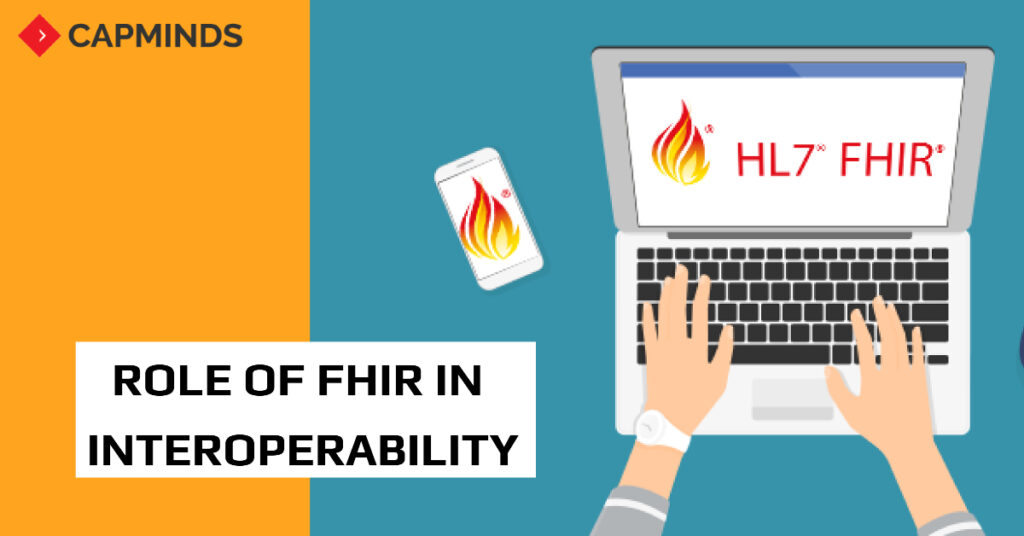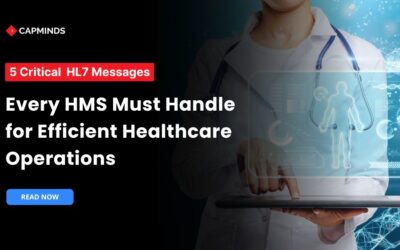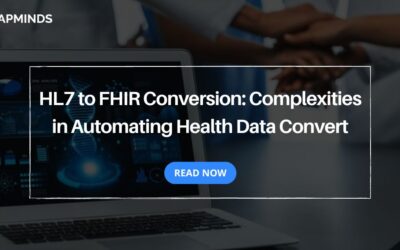Role of FHIR In Interoperability
As FHIR is becoming increasingly important for providers, healthcare vendors are paying great attention to the data standards that will enable seamless, on-demand information exchange.
The healthcare industry is going through a drastic digital transformation. The digital maintenance of health records has made the patient data easily accessible online. The Compliance with the Electronic Medical Records (EMR) created the need for managers in healthcare operations, IT, and security to rethink how to interoperate with their partners, as well as how to handle resources internally
The Fast Healthcare Interoperability Resource (FHIR) has quickly become one of the most popular protocols for the development of an application-based approach to interoperability and health information exchange.
Why is FHIR important? Why are some of the top healthcare vendors concentrating more on it? In this article, we discuss the emerging role of FHIR in interoperability and the importance of data exchange to patient care.
Key Principles of FHIR
FHIR serves as a connector between the parties that need access to the patient data. With seamless data sharing through open APIs, the patient records can be accessed and viewed quickly which helps to make the right decision.
As defined by HL7, the key principles of FHIR are as follows.
- FHIR prioritizes implementation
- FHIR provides an accessible framework for interoperability
- FHIR keeps complexity where it belongs
- FHIR supports but does not mandate tight specifications
How does FHIR differ from others in improving interoperability?
To date, most of the health care information exchange and data interoperability is based on documents. They can be shared either by fax or email or by electronically. To do so, the providers first have to choose a set of data to transmit and then need to generate a message that contains only data. This kind of approach helped the organizations to communicate successfully, but it can be too limiting for decision making.
For example, the Consolidated Clinical Document Architecture (C-CDA) is a standardized document format that holds important data, but it is very similar to PDF formats. The available data is relatively static and it takes time and effort to extract the data and make it usable in any other format.
A document-based data exchange provides complete information but it doesn’t allow the provider to inquire into the context of the data received.
For instance, if you are sharing some test results means it’s good and of course, it’s important information to consider. But apart from the test results, the patient health details are really important for a clinician to understand. The health information exchange is purely based on C-CDA XML documents and it doesn’t allow access to data level information.
Using a standardized API, FHIR allows developers to create apps that transcend this document-based environment. Those applications can be plugged into a basic EHR operating system and feed information directly into the provider workflow. So that it avoids the issues of document-based exchange, which often requires the provider to access data separately.
How are Vendors using FHIR?
With FHIR the providers, developers, and the vendors started on creating new tools that leverage the promising data standard. The effective usage of FHIR includes some of the major challenges, preventing healthcare organizations from increasing patient engagement and intelligent clinical decision support.
- Cerner Corporation and Geisinger Health System are using FHIR to expand population health management capabilities and create specialty-specific applications.
- Epic Systems, the Mayo Clinic, and IBM Watson Health are using FHIR as the basis for a new clinical decision support model that includes real-time data access for providers.
- Private industry interoperability efforts like the Healthcare Services Platform Consortium (HSPC) are using FHIR to create an EHR-agnostic “marketplace” for apps that allow data to flow freely across disparate systems.
The CommonWell Alliance, Carequality, and the Sequoia Project are also exploring FHIR’s benefits for creating seamless data exchange.
What does FHIR do for patients and providers?
Why should patients and providers need to think of FHIR? Because it has the true potential to make healthcare easily accessible and very similar to the other internet-based experiences in other industries.
Healthcare IT is growing day by day, but so far only a few tools are available in the market that can connect patient-generated health data (PGHD) with streamlined provider workflows. This growth is meaningless to the providers if they can’t access the most important data quickly. Yes, Physicians want the patient’s healthcare data, but if the data is presented in an easy-access way, they consider it to be useful and as well as actionable too.
FHIR makes this happen by performing analytics on patient-generated health data and presenting users with a summary of trends that are relevant to patient wellness.
Providers may be able to customize their toolsets to meet the needs of their specialty. This can be done by pulling data from different research sources to boost their clinical decision support capabilities.
Final Thoughts
Now FHIR has become the global standard for secure sharing healthcare data among all participants in the sector. As developers continue to find innovative ways to resolve the fundamental issues of health data interoperability, providers and patients can easily gain access to easily accessible new features within their health IT systems.




